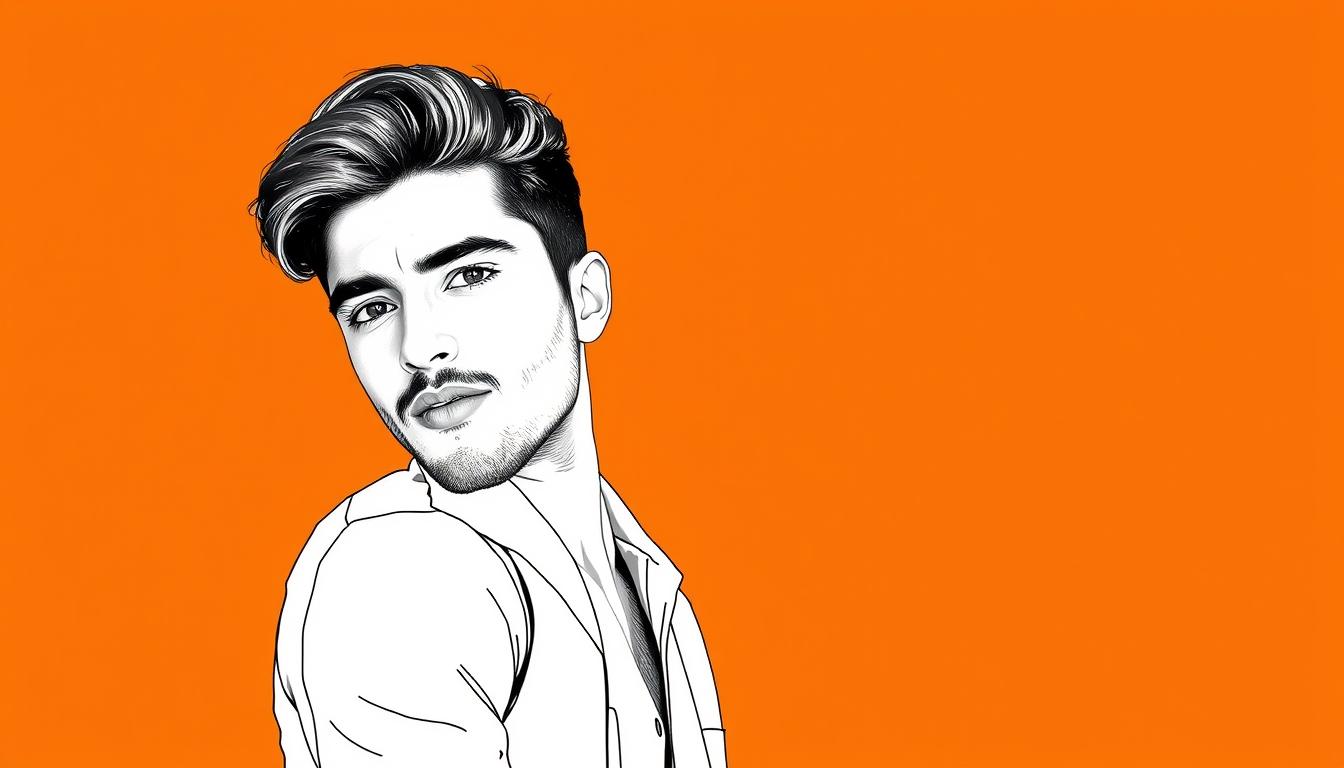In 2022, an Iranian actress based in Paris won the Cannes Film Festival Award for Best Actress. Her powerful performance in “Holy Spider” marked a career high point. It was a moment of global recognition built over fifteen years.
Her life story reads like a dramatic film script. She fled her homeland in 2006 under dire circumstances, facing potential imprisonment. Starting over in France, she rebuilt her life and craft from the ground up.
This past year brought both triumph and profound context. Her Cannes victory arrived as protests surged in Iran. Her success became inseparable from the struggle of the women she now represents on a world stage.
Today, her Paris home is a creative command center. She plans her directorial debut while carrying the emotional weight of a revolution from afar. Her story is one of sheer determination, refusing to let past trauma silence a powerful voice.
Zar Amir Ebrahimi: Breaking Barriers on the Global Stage
A moment of cinematic triumph at the Cannes film festival in 2022 carried the weight of a personal and national struggle. For the actress, the award was a complex victory.
Cannes Triumph and International Recognition
Her win for Best Actress at Cannes made her the first Iranian woman to claim this honor. The celebration felt incomplete, however. It coincided with profound unrest in her home country.
She described the year as “heavy, crazy and very productive.” Her powerful performance in “Holy Spider” was now seen through the lens of brave women protesting for freedom. The award gave their fight a global platform.
This recognition immediately changed her career trajectory. It opened doors that were previously closed.
- New film projects in Australia and Europe.
- Direct conversations with influential industry people.
- A stronger platform to advocate for artists in Iran.
From Iranian Roots to Parisian Prestige
The journey to that Cannes stage took fifteen years. It began with exile and rebuilding a life in Paris from scratch.
Her path involved navigating French bureaucracy and taking odd jobs. She worked relentlessly to cross internal borders within the film industry. The Best Actress award was a validation of that stubborn survival.
Her arc represents an individual triumph. It also signals collective possibility for women everywhere who refuse to be silenced.
In-Depth Look at Holy Spider and Transformative Roles
Playing journalist Arezoo Rahimi required no acting method—the character’s struggle against systemic misogyny mirrored the actress’s own lived experience. This film became more than entertainment as real-world events unfolded.
The Social and Cultural Impact of Holy Spider
Holy Spider arrived before Mahsa Amini’s death sparked Iran’s uprising. Yet the film reads as prophetic now. Its depiction of violence against women mirrored the reality protesters confronted.
The serial killer at the film’s center murdered 16 sex workers. Portions of society celebrated him as a moral crusader. This detail exposes the rot the film wanted audiences to witness.
The work gave voice to women whose murders barely registered as crimes. It became a document of conditions driving millions into the streets.
Crafting Characters in Times of Turbulence
Ebrahimi spent three years as casting director before stepping into the lead role. The original actress withdrew one week before shooting. Necessity became opportunity.
Her performance brings deliberate weakness to the journalist character. Not as flaw but as reality. Determination lives inside a body that society constantly threatens.
In an improvised moment, going undercover as a sex worker, she chose “Zahra” as her false name. She reclaimed the professional identity abandoned in Iran.
| Aspect | Real Events | Film Portrayal | Social Commentary |
|---|---|---|---|
| Serial Killer Case | Saeed Hanaei killed 16 women | Focus on victims’ humanity | Exposes societal indifference |
| Journalist’s Role | Real investigators faced obstacles | Arezoo’s personal struggle | Highlights systemic misogyny |
| Public Reaction | Killer celebrated by some | Moral hypocrisy revealed | Critiques victim-blaming culture |
| Timing Significance | 2001 murders | 2022 release | Prophetic relevance to protests |
This role arrived at a crucial time. It showed how cinema can document injustice and predict upheaval. The character’s truth resonated beyond the screen.
Navigating Personal Challenges and Career Resilience
Facing potential imprisonment and lashes, she performed what she calls ‘the biggest role of my life’ – survival itself. The situation began in 2006 when an intimate video was stolen and sold across her home country.
Overcoming Adversity in Iran and Beyond
At 26 years old, her entire life collapsed overnight. Someone she trusted betrayed her privacy. Iranian authorities prepared charges carrying 100 lashes and years in prison.
That third night became pivotal. She rejected shame and decided to fight. A Guardian interview created international attention that shielded her from immediate arrest.
Fleeing her country in 2008 meant leaving everything behind. She arrived in France with nothing but determination. The first year brought no work or money, only isolation.
Art as a Channel for Healing and Empowerment
Friends suggested practical alternatives to cinema. She refused. Instead, she learned camera operation and editing to stay connected to film sets.
Cinema became her lifeline during those difficult years. Each role offered a way to transform personal trauma into artistic strength. The medium helped her maintain identity through exile.
| Period | Key Challenge | Coping Strategy | Outcome |
|---|---|---|---|
| 2006-2008 (Iran) | Public scandal, legal threats | Public denial, international appeal | Safe passage to France |
| 2008-2009 (France) | No work, financial instability | Technical film skills development | Industry proximity maintained |
| 2009-2022 (Exile) | Bureaucratic barriers, isolation | Persistent career building | Gradual professional establishment |
Her resilience came from having lost everything once. Survival became easier the second time. The night she decided to stay alive ultimately saved both her person and her art.
Cultural Influence and Impact on the Global Film Industry
Her cinematic work transformed into a movement, with each new film amplifying the voices of Iranian and Afghan women. This shift marked a deliberate career pivot after international recognition.
The projects multiplied across continents, creating a global tapestry of resistance. From Australia’s “Shayda” to France’s “White Paradise,” each story documented systemic violence while refusing victim narratives.
Empowering Iranian Women Through Cinema
Collaborating with director Noora Niasari on the Sundance feature “Shayda” connected two generations of diaspora artists. Their work proved that culture survives even when artists face erasure.
Ebrahimi also organized Cannes panels demanding concrete industry support for Iranian artists. She used her platform to amplify people still trapped inside the country.
The community she’s building includes her UTA agent Keya Khayatian, who represents Persian talent like Asghar Farhadi. This infrastructure didn’t exist when she first arrived in Paris.
Her hope lies in collective progress—more women telling their own stories, more industry gatekeepers recognizing talent regardless of passport status. The movement continues through each new project.
Reflections and a Vision for a Changing Industry
Sometimes she feels like she’s in a washing machine. The Cannes honor brought validation but also vertigo. Celebrating success feels impossible while revolution convulses her home country.
Her upcoming feature film, Honor of Persia, marks her directorial debut. After years of distance, she decided only she could tell this story about her last year in Iran. The work channels personal trauma into characters that might help other people feel less alone.
Her vision for the industry demands change. Persian culture offers richness beyond stereotypes. Iranian women’s stories deserve space beyond victim narratives.
The way forward requires both individual artistry and collective action. Each project becomes an opportunity to redirect attention toward the women still fighting. Cinema remains her most honest way to process reality and offer hope.




